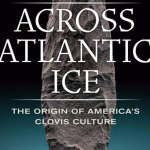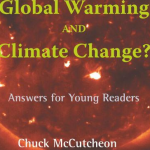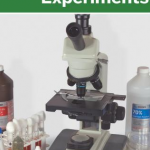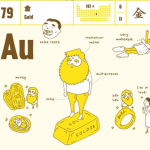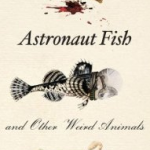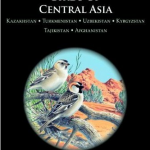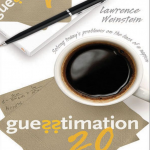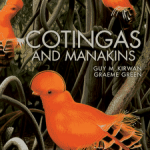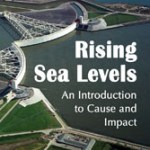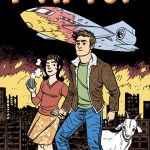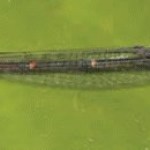Books
Let Them Eat Shrimp: The Tragic Disappearance of the Rainforests of the Sea by Kennedy Warne has been out for about a year, but if you've not seen it you may want to have a look at it. Warne, editor of New Zealand Geographic magazine, is a naturalist who writes about the embattled mangrove swamps, which are a key part of many oceanic ecosystems as well as local and regional economies.
"What’s the connection between a platter of jumbo shrimp at your local restaurant and murdered fishermen in Honduras, impoverished women in Ecuador, and disastrous hurricanes along America’s Gulf coast?…
I want to talk about the book Across Atlantic Ice: The Origin of America's Clovis Culture. It was written by Dennis Stanford and Bruce Bradley, both highly respected archaeologists. The point they make in the book is very simple: An important archaeological culture known as the "Clovis" is actually a European culture that traveled east to west from Europe to North America, arriving first along the New England coast and then fairly quickly spreading across the US to the Rockies, and subsequently kinda petering out though there are bits and pieces of Clovis looking stuff farther west.
From…
What are Global Warming and Climate Change?: Answers for Young Readers is a fairly unique book, as far as I know. It explains climate change, contextualized global warming, discusses causes and consequences and directly addresses the politics of climate change and global warming. The official book description:
"Global warming is one of the most talked about science subjects today. Maybe you have seen pictures of polar bears or other animals stranded atop floating chunks of melting ice. Perhaps you have heard about or lived through extreme weather - hurricanes, floods, water shortages, heat…
One of the more popular books I've ever reviewed here, judging by the number of people who read the review, was this one on home chemistry. Now, let's see if we can meet or beat the physical sciences with this new title:Illustrated Guide to Home Biology Experiments: All Lab, No Lecture (DIY Science). Robert Bruce Thompson, author of the chemistry book, has teamed up with Barbara Fritchman Thompson, to produce this new work.
The book has a lot of experiments in it, organized in a reasonable way, with complete instructions on everything. I would prefer to see more graphics illustrating the…
Have ever really thought about the elements? Have you ever really asked questions about them? If you are some kind of scientist or science geek, you probably know a lot about them, and that could even be a disadvantage for you, in a sense. For instance, if you learned early on that elements were formed at certain points in time and in certain places (the big bang or later in stars, for most atoms) then the following question may not have occurred to you: "What happens when a bunch of Carbon atoms get old. Do they fall apart?" Also, a sense of purity may be something you understand but…
When I was a kid, I loved the almanac. I don't remember where they came from, but every couple of years a new one would appear in the house, and as soon as I got my hands on it, it moved into my room and anybody who wanted to look stuff up in it after that needed to see me first. And, actually, much of the time I could give them whatever info they needed if they just asked me, because I knew the contents.
I have on my desk the "The World Almanac for Kids 2013" produced by World Almanac. It has a picvture of a ballerina, a frog, a football player with the New York Jets, somebody who looks…
... Astronaut Fish and Other Weird Animals...
"Look, for the last time, we're not angry lesbians! We just considered all of the options and it makes more sense for us to reproduce on our own!" ... "Ha! I told you she'd yell. Yo owe me fifty bucks."
I remember when the story of the blood shooting lizard of the American Southwest was first figured out. The native people of the area had always spoken of the ability of a particular lizard to spew a stream of blood from its eyes. This would be done to thwart attackers. Naturally, as is often the case, scientists working in the area wrote…
Kazakhstan, Turkmenistan, Uzbekistan, Kyrgyzstan, Tajikistan, Afghanistan ... they all have birds, it turns out. Until now there has never been a field guid to the birds of this regino. Raffael Aye, Manuel Schweizer, and Tobias Roth have written one, and it is called, fittingly, Birds of Central Asia: Kazakhstan, Turkmenistan, Uzbekistan, Kyrgyzstan, Tajikistan, Afghanistan.
It covers 618 species using 143 plates with multiple birds on a plate, set up in classic Peterson Field Guide format with the range maps right with the bird descriptions across from the illustrations. The…
Answer: About 20 meters. Th Hubble Space Telescope's aperture is 2.4 meters. So, you really can't do it at the present time.
This is one of a large, seemingly inestimable number of practical need-to-know and esoteric questions addressed in Lawrence Weinstein's book Guesstimation 2.0: Solving Today's Problems on the Back of a Napkin, a followup book on the earlier Guesstimation: Solving the World's Problems on the Back of a Cocktail Napkin.
I should say that I personally have an uncanny ability to estimate things. This comes from being an archaeologist with a lot of experience in CRM. For…
Five families of birds make up the group that could be referred to as the Cotingas and Manakins, which in turn include species with such colorful names as "Pale-bellied Tyrant-Manakin," "Bare-necked Fruitcrow," "Peruvian Plantcutter," and "White-browed Purpletuft." And certainly, you've heard of the Andean Cock-of-theRock. These birds and their relatives are THE famous colorful amazing birds of the Neotropics, the birds people who go to the Jungles of Central and South America go to see. "... the song of the Xcreaming Piha,... the loudest bird on Earth, is used by moviemakers to epitomize…
Rising Sea Levels: An Introduction to Cause and Impact is a new book by Hunt Janin and Scott Mandia. Janin is a writer of non fiction and scholarly books, and Mandia is a professor of physics and a science communicator who specializes in climate-related issues.
To me, sea level is one of the most interesting and important of climate related issues. Interesting because I've done archaeology at the edge of the sea, sometimes beneath it, sometimes racing ahead of it, and often, looking at changes in human settlement caused by its rise since the Last Glacial Maximum. Important because one of…
Jack Parsons (1914-52) was a rocketry pioneer, a science fiction fan and a deeply committed occult follower of the aged Aleister Crowley. I recently read the 2004 edition of John Carter's biography of the man, Sex and Rockets. The Occult World of Jack Parsons.
Despite such promising material, it's not a very engaging or well-written book. It's largely about rocketry and occultism, but neither field is contextualised very well. There's lots of detail but not much in the way of a bigger picture. And Carter equivocates in his attitude to occultism. Sometimes he seems to believe in it, sometimes…
How can you go wrong with blimps?
The Aviator is a new book that gives you a world of post-global warming climate and interesting developments in transportation technology and artificial intelligence. It is written by New Zealand based writer Gareth Renowden. The Aviator explores a post-apocalypse world where the apocalypse is not nuclear war or a large object hitting the earth, or even an outbreak of zombi-ism, but rather, unfettered human-caused climate change. The story itself is an excellent read and even qualifies as a page turner. But there is another element that readers don't need…
I've blogged before about authors who write fiction in the first person past tense but clearly have no idea of in which situation or at what point in time their narrator resides while telling the story. This is one of the problems with David Tallerman's 2012 novel Giant Thief. But what made me quit reading it was another problem: Tallerman forgetting who his narrator is entirely.
The book is set in a vaguely European world with giants and magic and a material culture apparently on the High Medieval tech level, just before the invention of fire arms. Yet the narrator's voice marks him as a…
Henry Gee, the Nature editor, has a novel in three parts ... Siege of Stars: Book One of The Sigil Trilogy ... that I found hit home very closely like maybe Henry was me reincarnated and then transported back through time so his, er, our timeline would cross. This is not surprising since Henry and I have had overlapping interests in science for several decades, so his novel references a sense of understanding of the landscape, the kind of thing a geologist or archaeologist achieves either over time or because of an innate capacity. One of his characters is such an archaeologist. Another…
G is for Galaxy: An Out of This World Alphabet (Alphabet Books) is one of a series of kid's alphabet books with an interesting twist. The pages have the usual big letter, a picture of something that starts with that letter, and a short sentence or two referring to that word. But on the same page is anywhere from one to a few paragraphs of extra text written at a basic level but seeming targeted to the adult who is reading the book to the kid, providing additional context, background, and details. For instance:
"G is for Galaxy, a big family of stars so bright. Our is called the Milky Way…
Spent a week gloriously off-line at my mom's glorious summer house in the archipelago. Oh the joy of reading 300 pages for fun in one day without feeling the need to check e-mail! Here are the books I read:
Invented Knowledge. False history, fake science and pseudo-religions. Ronald H. Fritze 2009. One amazing essay covers the scifi con-man religion Nation of Islam. Did you know that Louis Farrakhan started out as a calypso singer, and that George Clinton's Mothership was a concept borrowed from NoI mythology?
Falling Free. Lois McMaster Bujold 1988. Charming fast-paced scifi. Four-armed…
I just got a copy of The Linux Command Line: A Complete Introduction. I read one review of it a while back which was quite positive, suggesting that the book was both really useful and really not boring. Here's the description from the publisher:
You've experienced the shiny, point-and-click surface of your Linux computer—now dive below and explore its depths with the power of the command line.
The Linux Command Line by William Shotts. No Starch Press. Image from the publisher.
The Linux Command Line takes you from your very first terminal keystrokes to writing full programs in Bash,…
I want to tell you about a cool book, but first, here's something interesting about Dragonflies. Terrestrial animals (like humans) require long chain fatty acids but don't synthesize them from basic parts. Higher terrestrial plants don't make the biggest of these molecules either, but plants do make molecules that can be turned into things like EPA and DHA in animals. So, while terrestrial animals can get what they need by consuming other animals or by starting out with plant molecules, it is a long slog from a bunch of readily available simple molecules to large and hard to get but very…
With my colleague Greg Tinkler, I spent an afternoon last week at a local public library talking to kids about zombies:
The Zombie Apocalypse is coming. Will you be ready? University of Iowa epidemiologist Dr. Tara Smith will talk about how a zombie virus might spread and how you can prepare. Get a list of emergency supplies to go home and build your own zombie kit, just in case. Find out what to do when the zombies come from neuroscientist Dr. Greg Tinkler. As a last resort, if you can't beat them, join them. Disguise yourself as a zombie and chow down on brrraaaaiiins, then go home and…

